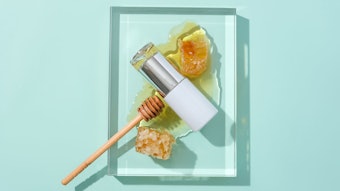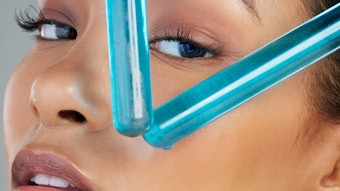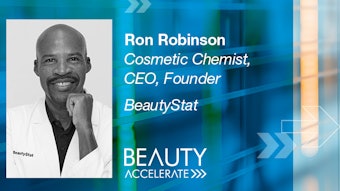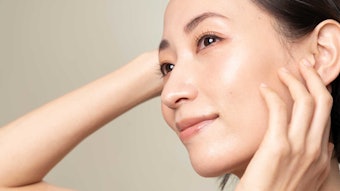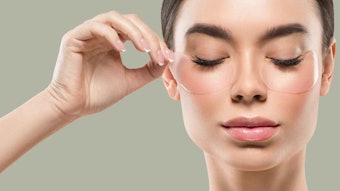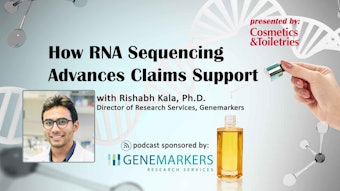
Read the full article in the March 2021 digital edition. . .
Transfer Proof can be defined as the ability of a cosmetic product to completely resist transferral from one surface to another. It has long been a popular claim across foundation and lip products but the ongoing COVID-19 crisis has made it more relevant than ever before.1 Wearing face masks is now essential to everyday life and consumers do not want to see makeup left behind after masks are removed. This puts increasing pressure on formulation chemists to create color cosmetics that perform,2 and raw material suppliers are developing ingredients to support this transfer-proof performance—most notably, novel film formers.3
Taking a step back, however, it is important to understand what consumers expect when they purchase a product that claims to be transfer proof and what they accept in terms of proven performance. Will they engage with product communications of statistical significance from efficacy testing, or do they seek tangible proof that the product works in real terms? The transfer-proof benefit is now as important as long wear or hydration, so how can it be measured objectively when consumer perception is strongly at its core?
This was the focus of the present work, which aimed to strengthen conventional instrumental measurements by first defining transfer proof from the consumer perspective. These insights were then used to design a test method to measure this attribute in test lipsticks.
Consumer Survey: Defining Transfer-proof Attributes
Before any measurement considerations, it was important to define what exactly transfer proof and transfer resistant meant to consumers. Transfer claims are visual in nature; e.g., lipsticks can noticeably transfer onto face masks upon wearing or ceramic cups during drinking. Transfer proof could be defined as the ability to completely resist transferral, whereas transfer resistant could be considered as having slightly less efficacy in comparison.
Yet, either claim on its own could be understood to mean the same thing. Thus, gaining insight into the consumer’s understanding of transfer proof and transfer resistant was important in order to deliver a product that meets consumer expectations.
To define the boundaries between transfer resistant and transfer proof, a survey was conducted in various countries. This survey consisted of a series of images showing ceramic cups with varying degrees of lipstick transfer, including a cup completely free of lipstick. Images of the ceramic cups were taken using an imaging systema and were randomized in a consumer survey for analysis (see Figure 1).
Consumers graded which images they considered to be transfer proof, transfer resistant or neither. Opinions from a total of 95 volunteers across China, India, Mexico, Russia and Indonesia were collected with the aim of developing a grading scale to integrate the perceptions of these volunteers. In parallel, colorimetric measurements were performed on each of the cups using a portable camerab, with capabilities previously described in the literature,4, 5 to establish corresponding color values to each cup's “condition.”
Clinical Evaluation of Test Lipsticks
Following the outputs of the consumer perception survey, a clinical study was performed to measure the transfer-proof performance of three test lipsticks: an in-house lipstick specifically formulated to resist transferral and featuring wear-enhancing raw materials; a competitor benchmark lipstick advertising transfer-proof claims; and a regular in-house lipstick without transfer-resisting raw materials. The general formulas are provided in Table 1. Note the ingredients are listed in random order.
. . .Read more in the March 2021 digital edition. . .
References
- Gerstell, E., Marchessou, S., Schmidt, J. and Spagnuolo, E. (2020, May). How COVID-19 is changing the world of beauty. McKinsey & Company. https://mck.co/3sG7F9n
- Culliney, K. (2020, Aug 26). UK beauty to decline 10% in 2020: ‘Cosmetics has taken a backseat.’ Cosmetics Design Europe. https://bit.ly/3iAz9bV
- Lim, A. (2020, Sep 23). Mask-friendly makeup: Covestro eyes potential for bio-based film former in APAC color cosmetics market. Cosmetics Design Europe. https://bit.ly/35Z9AMA
- Matias, A.R., Ferreira, M., Costa, P. and Neto, P. (2015). Skin color, skin redness and melanin biometric measurements: Comparison study between Antera 3D, Mexameter and Colorimeter. Skin Res Techno 21 346-362.
- Messaraa, C., Metois, A., Walsh, M., et al. (2018). Wrinkle and roughness measurement by the Antera 3D and its application for evaluation of cosmetic products. Skin Res Technol 24 359-366.
Captions/Footnotes:
a VISIA CR 2.3, Canfield Scientific
b Antera 3D, Miravex Ltd.




